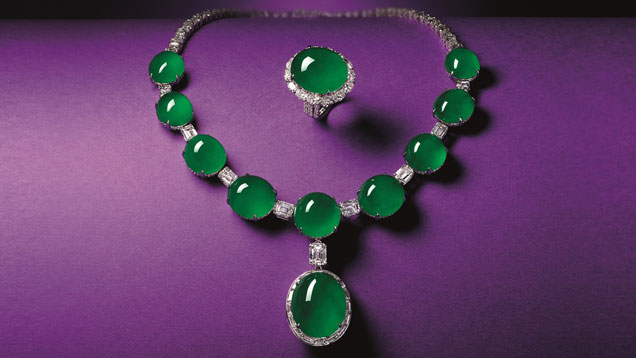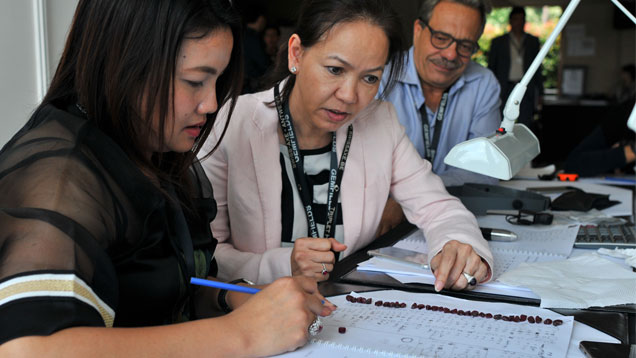U.S. Seasonal Shopping Diversifies Away from
“Black Friday”
December 10, 2014

The National Retail Federation (NRF) reported that Black Friday – the day that typically opens the holiday shopping season – saw a 5.2% drop in traffic from 2013, with consumers planning to spend an average of 6.4% less. The NRF notes, however, that shopping is a 24/7 deal and more and more consumers have taken to smartphones, tablets and online services to make purchases.
Online purchases during Thanksgiving weekend and “Cyber Monday” rose 17% from 2013, according to comScore, the ecommerce research organization. Other reports noted that the growth in online sales came mainly from traditional retailers who have improved their online selection and buying experience.
Additionally, the movement to buy from local merchants appeared to gain strength this season, which could be one reason for the positive numbers reported by Centurion Luxury Jewelry Index. Centurion noted that more than 43% of luxury jewelers surveyed reported sales increases greater than 10% while another 23.5% logged sales increases between 1% and 10%. Some 13% said sales ran even with last year and 10% reported slight declines.
The survey also found that many shoppers, who traditionally waited until the final week before Christmas to buy, were making their purchases earlier.
A study by the U.S. Bureau of Labor Statistics, reported by Idex, on who buys jewelry indicated one obvious fact: The wealthiest buy the most. Those earning $150,000 or more a year bought 23% of the jewelry sold in the U.S. The study also reported, however, that those households earning between $40,000 and $90,000 yearly bought 42% of jewelry sold in the country.
Publicly traded retail jewelers reported mixed results for the third quarter of the calendar year, which ended Nov. 1.
Signet Jewelers, which operates Kay Jewelers, Jared Galleria and the recently acquired Zale Corp. in the U.S., reported overall same store sales growth of 4.2% and a 96% jump in online revenues against the same quarter of 2013. Online sales, however, remained a small part of Signet’s operation, accounting for sales of $44.8 million against total revenues of $1.18 billion. The Sterling brands saw a 6.8% sales increase, while Zales’ logged a decrease of 0.9%. Signet, which operates a diamond manufacturing plant in Botswana, also announced it has been named a De Beers’ sightholder, a move “that will advance its diamond sourcing efforts.”
Tiffany & Co. reported that its third quarter same-store sales rose 4% for the quarter.
By market: North American sales were up 11%; down 3% in the Asia-Pacific region (excluding Japan); down 6% in Japan; and up 2% in Europe.
In China, Chow Tai Fook, the region’s largest retailer, reported that revenues fell 22% for the quarter that ended Sept. 30. The steep decline, however, was measured again the 2013 “gold rush” that followed an abrupt decline in the price of gold. By contrast, demand for gem-set jewelry increased 25%.
AUCTIONS: The auctions have continued their record-breaking sales this fall.
Sotheby’s was expecting $15 million for a GIA-graded 9.75 carat (ct.) Fancy Vivid blue diamond from the estate of Mrs. Paul Mellon that went up for auction Nov. 21 in New York. It wound up getting more than twice that amount from a Hong Kong buyer: $32.6 million.
At $3.38 million per carat, it is far and away the highest per-carat price ever paid for any gemstone (the previous record was $2.3 million for a vivid pink diamond). It is also the highest price ever achieved by a blue diamond and the second highest price ever paid for any gem.
The buyer, not named by Sotheby’s, issued a statement that it would be named the Zoe Diamond.
Four days later in Hong Kong, Christie’s sold a 2.09 ct. Fancy red heart shape diamond, graded by GIA, for $5.09 million or $2.44 million per carat. It was the highest price ever paid for a red diamond at auction.
On Dec. 7, Tiancheng, the Hong Kong auction house, sold a cabochon jadeite necklace and ring for a record $11.8 million. The suite contained 11 translucent green jadeite cabochons, the largest a pendent measuring 25.10 x 20.39 x 8.55mm.
Gemfields’ second auction of rubies from its Montepuez mine in Mozambique achieved a record $698 per carat and saw its largest find to date, a 40.28 ct high quality ruby, go to a New York gem dealer.
The company sold more than 63,000 carats of high quality material for $43 million at its Dec. 8 Singapore auction. Fifty dealers from around the world bid on the rubies that were divided into 41 lots. When the bids were tallied, 35 of the lots met their reserve price and were sold to the high bidders.
The large ruby went for an undisclosed price to a dealer from New York, said Vincent Pardieu, GIA senior manager of field gemology, who noted that the company had named it the “Rhino Ruby” to raise the awareness about conservation issues in Africa.
After the sale, Gemfields announced that a portion of the proceeds from the sale of this gem will go toward efforts to halt poaching of rhinoceros in game preserves along the country’s long border with South Africa.
Gemfields began operating the Montepuez concession in 2012. It conducted its first auction in June 2014 with sales totaling $33.5 million.

Buyers from KV Gems of Thailand study a ruby parcel at the Gemfields auction in Singapore. Photo by Vincent Pardieu/GIA



